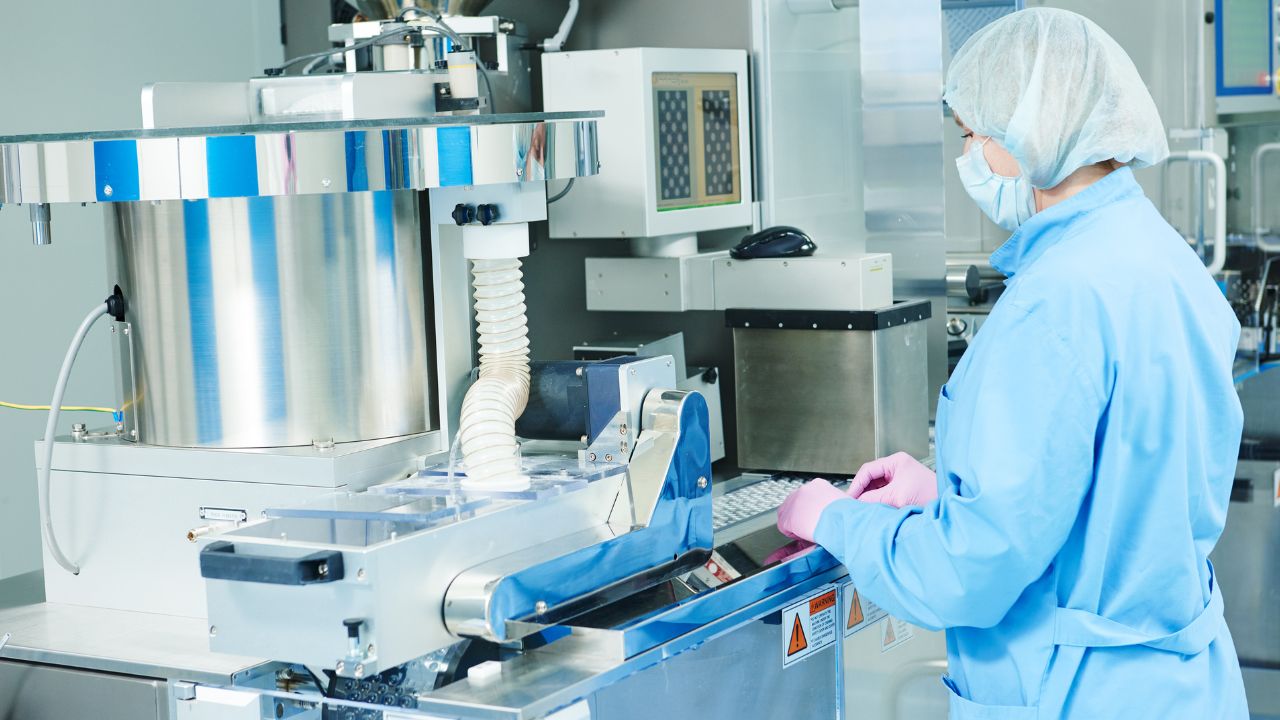Aseptic production in the pharmaceutical industry refers to the manufacturing processes designed to prevent contamination from microorganisms, ensuring that drugs are produced under sterile conditions.
This is particularly important for injectable products, ophthalmic solutions, and other sterile formulations that enter the human body directly. Drug manufacturing equipment plays a crucial role in achieving and maintaining the sterile environment necessary for aseptic production.
The Importance of Aseptic Production
Aseptic production is essential for the safety and efficacy of sterile drugs. Any contamination during the production process can lead to serious health risks for patients, including infections and other complications.
To prevent these risks, the pharmaceutical industry uses highly specialized equipment that can maintain sterility throughout the production process. This equipment is designed to operate in cleanrooms or controlled environments where airborne particles, microbial contamination, and human interference are minimized.
Key Equipment Used in Aseptic Production
Several types of drug manufacturing equipment are integral to aseptic production. These include isolators, filling machines, sterilization equipment, and filtration systems, all designed to ensure that the production environment remains sterile and that the final product is free from contaminants.
- Isolators: Isolators provide a physical barrier between the equipment operators and the sterile environment. This equipment is often used in processes such as filling or mixing, where even minimal exposure to the external environment could compromise the product's sterility. By maintaining a pressurized, controlled atmosphere within the isolator, manufacturers can ensure that no microorganisms enter the sterile workspace.
- Aseptic Filling Machines: Filling machines are used to transfer sterile drugs into vials, syringes, or ampoules in a sterile manner. These machines must operate with extreme precision to avoid contamination, ensuring that each container is filled under the same conditions without exposing the drug to potential contaminants. Modern aseptic filling machines often incorporate robotic arms and automation to further reduce the risk of human error or contamination.
- Sterilization Equipment: Before any drug manufacturing equipment can be used in an aseptic environment, it must be properly sterilized. Sterilization equipment, including autoclaves and vaporized hydrogen peroxide (VHP) systems, is used to eliminate any existing microbial contamination on the equipment. These sterilization processes are carefully monitored to ensure that they meet industry standards and guarantee that the equipment is free of contaminants.
- Filtration Systems: Filtration is another critical process in aseptic production, particularly for liquid drugs. Sterile filters are used to remove any potential contaminants from the solution before it is transferred into its final container. The use of advanced filtration systems ensures that the drug meets the required sterility standards without compromising the integrity of the active ingredients.
Automated Equipment and Process Control
Automation plays a crucial role in aseptic drug manufacturing. Automated equipment helps reduce human interaction with the sterile environment, which is one of the leading causes of contamination. Technologies like robotics, automated cleaning systems (Clean-In-Place, CIP), and automated sterilization processes (Sterilize-In-Place, SIP) are increasingly used to maintain sterility. These systems can be programmed to follow strict protocols and minimize the need for human intervention, reducing the risk of contamination.
Additionally, automated monitoring systems are used to continuously track environmental conditions such as temperature, pressure, and particle count within the cleanroom. These systems ensure that the production environment remains within the strict parameters required for aseptic production.
Challenges and Future Trends
While drug manufacturing equipment has advanced significantly in recent years, there are still challenges in maintaining the high standards of aseptic production. The need for continuous improvements in sterilization methods, contamination detection, and equipment reliability remains critical. Innovations in automation, robotics, and smart manufacturing technologies are expected to further enhance the capabilities of aseptic drug production equipment, making processes even safer and more efficient.
Conclusion
In aseptic drug manufacturing, specialized equipment is essential for ensuring that products are free from contamination. From isolators and filling machines to sterilization equipment and automated systems, these tools maintain sterile conditions and ensure that pharmaceutical products meet the highest standards of safety and efficacy. As technology continues to evolve, the equipment used in aseptic production will become more advanced, further reducing the risk of contamination and improving the overall quality of sterile drug products.


